The automotive world is abuzz with comparisons, but few rivalries ignite the sparks of debate quite like that of the Mercedes GLC and the Renault Rafale. These two SUVs stand out with their distinctive engineering and technological innovations. In this article, we will delve into the technical aspects and features that make each vehicle a compelling option for different types of drivers.
Mercedes GLC vs Renault Rafale – Performance, range & efficiency compared
Two cars, one duel: Mercedes GLC meets Renault Rafale.
Which one wins in performance, efficiency and value for money? Find out now!
Design and Dimensions
Both the Mercedes GLC and the Renault Rafale showcase contemporary designs that cater to modern aesthetics, yet they each adopt unique design languages. The GLC measures 4716 mm in length, 1890 mm in width, and rises 1640 mm high, projecting a robust and dynamic silhouette. Contrarily, the Rafale is slightly shorter at 4710 mm long, with a width of 1886 mm and a height of 1613 mm, offering a more compact feel.
Performance and Powertrains
Under the hood, the GLC offers a range of engine choices, including petrol and diesel mild-hybrid options, as well as plugin hybrids, with power outputs ranging from 186 HP to a staggering 680 HP. This versatile lineup allows drivers to select models that fit their needs, whether it's efficiency or exhilarating performance. The GLC boasts an all-wheel-drive system and impressive acceleration, with top models reaching 0-100 km/h in just 3.5 seconds.
On the other hand, the Renault Rafale impresses with its full hybrid and plugin hybrid engines, offering 200 HP and up to 300 HP in its most powerful variant. While its front-wheel-drive system may seem less aggressive than the GLC's, the Rafale delivers commendable efficiency, consuming as low as 4.7 L/100 km. For drivers more focused on eco-friendliness, the Rafale's electric range of 97 km expands its appeal.
Interior and Technology
Step inside the GLC, and you're greeted by a luxurious interior that Mercedes-Benz is famous for. High-quality materials, a spacious cabin, and cutting-edge technology—such as advanced infotainment systems—enhance the driving experience. The rear trunk capacity of 620 L ensures ample storage for trips and daily commuting alike.
The Renault Rafale, while less luxurious than its German counterpart, doesn't skimp on tech features. It includes a user-friendly infotainment system and a surprising trunk capacity of 627 L. The emphasis here is practicality and comfort, making it an excellent companion for families.
Fuel Efficiency and Environmental Impact
In the realm of fuel efficiency, the GLC presents a mixed bag depending on the variant chosen. The mild-hybrid engines offer competitive consumption figures, with some models as efficient as 5.1 L/100 km. However, its higher-performance models do eat into efficiency with up to 10.3 L/100 km.
In stark contrast, the Renault Rafale shines with its eco-friendly capabilities, with some variants achieving as low as 0.6 L/100 km in hybrid mode, and an impressive CO2 emissions rating of 14 g/km for the plugin hybrid version, appealing to the environmentally-conscious consumer.
Conclusion: Which SUV Reigns Supreme?
Ultimately, the choice between the Mercedes GLC and the Renault Rafale boils down to personal preferences. If you're seeking luxury, advanced technology, and extreme power, the GLC may be your best bet. However, if you prioritize fuel efficiency, practicality, and a reasonable price point, the Rafale makes a compelling argument. Both vehicles represent a growing trend towards hybridization and smarter, more sustainable driving options in the SUV market.
Here’s where it gets real: The technical differences in detail
Costs and Efficiency:
Price and efficiency are often the first things buyers look at. Here it becomes clear which model has the long-term edge – whether at the pump, the plug, or in purchase price.
Renault Rafale has a distinct advantage in terms of price – it starts at 37500 £, while the Mercedes GLC costs 50300 £. That’s a price difference of around 12785 £.
Fuel consumption also shows a difference: Renault Rafale manages with 0.60 L and is therefore convincingly more efficient than the Mercedes GLC with 1.60 L. The difference is about 1 L per 100 km.
As for range, the Mercedes GLC performs significantly better – achieving up to 714 km, about 617 km more than the Renault Rafale.
Engine and Performance:
Under the bonnet, it becomes clear which model is tuned for sportiness and which one takes the lead when you hit the accelerator.
When it comes to engine power, the Mercedes GLC has a significantly edge – offering 680 HP compared to 300 HP. That’s roughly 380 HP more horsepower.
In acceleration from 0 to 100 km/h, the Mercedes GLC is clearly quicker – completing the sprint in 3.50 s, while the Renault Rafale takes 6.40 s. That’s about 2.90 s faster.
In terms of top speed, the Mercedes GLC performs evident better – reaching 275 km/h, while the Renault Rafale tops out at 180 km/h. The difference is around 95 km/h.
Space and Everyday Use:
Cabin size, boot volume and payload all play a role in everyday practicality. Here, comfort and flexibility make the difference.
Both vehicles offer seating for 5 people.
In curb weight, Renault Rafale is slightly lighter – 1734 kg compared to 1910 kg. The difference is around 176 kg.
In terms of boot space, the Renault Rafale offers barely noticeable more room – 627 L compared to 620 L. That’s a difference of about 7 L.
In maximum load capacity, the Renault Rafale performs minimal better – up to 1910 L, which is about 170 L more than the Mercedes GLC.
When it comes to payload, Mercedes GLC noticeable takes the win – 600 kg compared to 444 kg. That’s a difference of about 156 kg.
Who comes out on top?
Overall, the Mercedes GLC shows itself to be outperforms in nearly all aspects and secures the title of DriveDuel Champion.
It convinces with the more balanced overall package and proves to be the more versatile choice for everyday use.
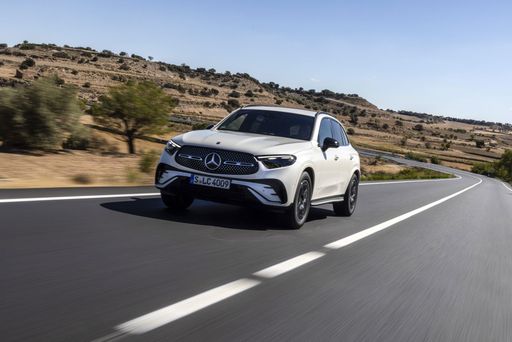 @ Mercedes-Benz Group Media
@ Mercedes-Benz Group Media
Mercedes GLC
Mercedes GLC
The Mercedes GLC blends plush cabin comfort and composed road manners into an SUV that feels more grown-up than it looks. It won’t shout for attention, but will quietly please buyers who want refinement, usable space and a touch of luxury without the drama.
details @ Mercedes-Benz Group Media
@ Mercedes-Benz Group Media
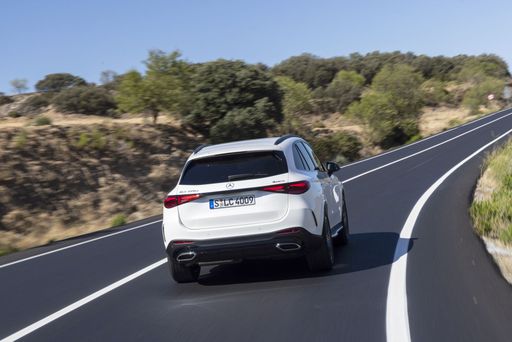 @ Mercedes-Benz Group Media
@ Mercedes-Benz Group Media
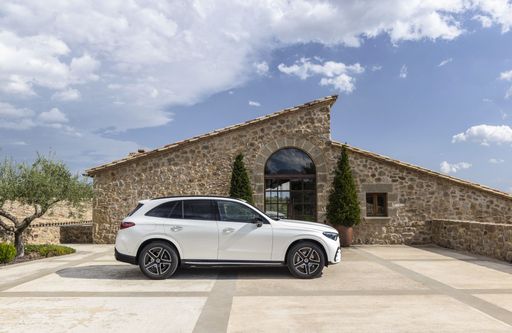 @ Mercedes-Benz Group Media
@ Mercedes-Benz Group Media
 @ Mercedes-Benz Group Media
@ Mercedes-Benz Group Media
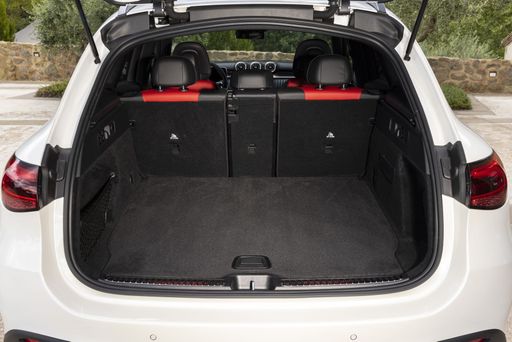 @ Mercedes-Benz Group Media
@ Mercedes-Benz Group Media
Renault Rafale
The Renault Rafale dresses bold coupé-inspired lines around a practical crossover body, turning heads without trying too hard. Inside it serves up a comfortable, well-equipped cabin and engaging driving manners, making it a clever choice for buyers who want a bit of panache with their daily commute.
details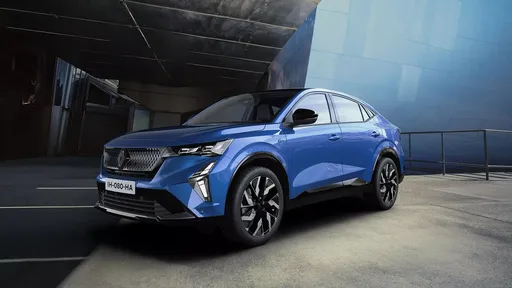 @ Renault Group Media
@ Renault Group Media
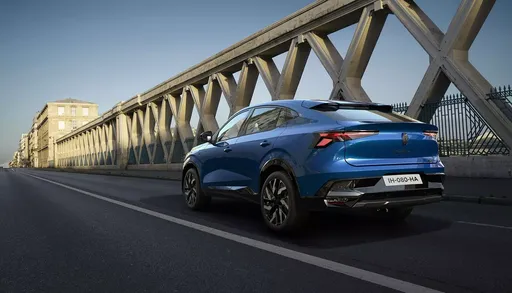 @ Renault Group Media
@ Renault Group Media
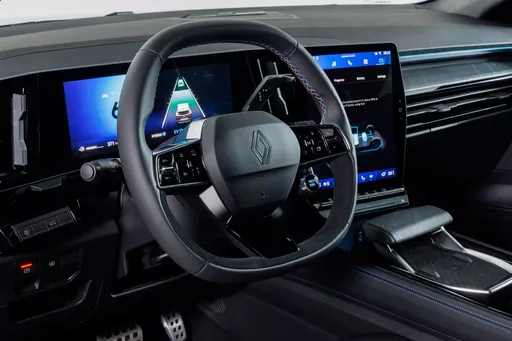 @ Renault Group Media
@ Renault Group Media
 @ Mercedes-Benz Group Media
@ Mercedes-Benz Group Media
|
 @ Renault Group Media
@ Renault Group Media
|
|
|
|
Costs and Consumption |
|
|---|---|
|
Price
50300 - 126600 £
|
Price
37500 - 49500 £
|
|
Consumption L/100km
1.6 - 9.9 L
|
Consumption L/100km
0.6 - 5 L
|
|
Consumption kWh/100km
14.9 - 16.6 kWh
|
Consumption kWh/100km
-
|
|
Electric Range
12 - 714 km
|
Electric Range
97 km
|
|
Battery Capacity
94 kWh
|
Battery Capacity
-
|
|
co2
0 - 225 g/km
|
co2
14 - 109 g/km
|
|
Fuel tank capacity
49 - 65 L
|
Fuel tank capacity
55 L
|
Dimensions and Body |
|
|---|---|
|
Body Type
SUV
|
Body Type
SUV
|
|
Seats
5
|
Seats
5
|
|
Doors
5
|
Doors
5
|
|
Curb weight
1910 - 2535 kg
|
Curb weight
1734 - 2025 kg
|
|
Trunk capacity
390 - 620 L
|
Trunk capacity
539 - 627 L
|
|
Length
4716 - 4845 mm
|
Length
4710 mm
|
|
Width
1890 - 1913 mm
|
Width
1886 mm
|
|
Height
1603 - 1647 mm
|
Height
1613 mm
|
|
Max trunk capacity
1335 - 1740 L
|
Max trunk capacity
1826 - 1910 L
|
|
Payload
475 - 600 kg
|
Payload
415 - 444 kg
|
Engine and Performance |
|
|---|---|
|
Engine Type
Petrol MHEV, Plugin Hybrid, Diesel MHEV, Electric
|
Engine Type
Plugin Hybrid, Full Hybrid
|
|
Transmission
Automatic
|
Transmission
Automatic
|
|
Transmission Detail
Automatic Gearbox, Reduction Gearbox
|
Transmission Detail
Automatic Gearbox
|
|
Drive Type
All-Wheel Drive
|
Drive Type
All-Wheel Drive, Front-Wheel Drive
|
|
Power HP
186 - 680 HP
|
Power HP
200 - 300 HP
|
|
Acceleration 0-100km/h
3.5 - 9 s
|
Acceleration 0-100km/h
6.4 - 8.9 s
|
|
Max Speed
208 - 275 km/h
|
Max Speed
180 km/h
|
|
Torque
320 - 1020 Nm
|
Torque
-
|
|
Number of Cylinders
4 - 6
|
Number of Cylinders
3
|
|
Power kW
137 - 500 kW
|
Power kW
147 - 221 kW
|
|
Engine capacity
1991 - 2989 cm3
|
Engine capacity
1199 cm3
|
General |
|
|---|---|
|
Model Year
2025 - 2026
|
Model Year
2024 - 2025
|
|
CO2 Efficiency Class
F, G, B, A
|
CO2 Efficiency Class
B, C
|
|
Brand
Mercedes-Benz
|
Brand
Renault
|
What drive types are available for the Mercedes GLC?
The Mercedes GLC is offered with All-Wheel Drive.
The prices and data displayed are estimates based on German list prices and may vary by country. This information is not legally binding.
